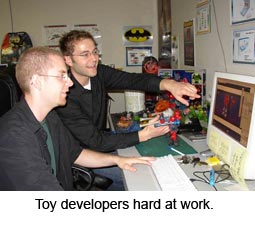
Advances in science and technology affect our day-to-day lives. Here is some hot news about really cool things being worked on now. You can also find out about some of the amazing places people in science and technology work, as well as neat sciencey things that occur in the world around us.
Solar-Powered Cell Phones
GLOBAL (Tech, Feb. 2009) -- Ever find your cell phone runs out of power when you're nowhere near an electrical socket to plug it into? A handful of companies have now developed solar-powered cell phones. They key companies launching solar-powered cell phones are LG and Samsung. Some companies have also launched solar powered chargers that you can charge normal cell phone batteries with (iSun and Hello Kitty are examples). Does this mean solar powered chargers or phones are more environmentally friendly? Nope. You're still charging batteries that someday will likely end up in landfill sites with zillions of other old batteries. And the batteries are not environmentally friendly.
David Dunlap Observatory has been sold
January 2009, update: The University of Toronto (UofT) sold the David Dunlaop Observatory (DDO) and the land around it. To find out more about this observatory, and the fact it is now closed -- possibly forever. click here.
News Flash!
April 2007: Ask Pippa was seen on Breakfast Television talking about toys! To find out more about the toys she talked about, click here to go to the NEW toy page!
Charging Batteries without Wires
COLLEGE PARK, MD (Physics. Nov. 2006) – Someday, in the next couple of decades, it may be possible to charge your cell phone without having to plug it in.
In fact, according to Marin Soljacic, PhD, a physicist at the Massachusetts Institute of Technology (MIT), it should be possible to recharge electrical gadgets wirelessly.
How? By using something in physics known as 'close range induction'. This is the ability for an electrical current to be transmitted between electrical coils that are very close to each other – even though they don't actually touch.
The finding could lead to the development of devices that don’t need all those annoying cables. Pretty cool, eh?
Students Learn the Techie Side of Healthcare
 TORONTO (Health/Tech. Nov. 2006) – Over 2,000 high school students attended an open-house at The Michener Institute, a school for people interested in healthcare-related careers – but who aren’t planning to be doctors or nurses.
TORONTO (Health/Tech. Nov. 2006) – Over 2,000 high school students attended an open-house at The Michener Institute, a school for people interested in healthcare-related careers – but who aren’t planning to be doctors or nurses.
Students at the school can take courses in becoming radiology technologists (working devices such as x-ray machines and more advanced devices that help see inside your body); respiratory therapists (helping patients breathe during surgery, or who have problems from various types of lung diseases); chiropody (foot care); lab work, and more.
Above, an instructor and volunteer check out a high-tech dummy that is used for training. The dummy has a pulse, heart beat, breathes (yes, the chest moves up and down), and even has a voice. It can be programmed to show signs of certain illnesses.
more on the Michener Institute
Yes, People Make a Living as Toy Researchers
 TORONTO (Engineering/Tech. Sept. 2006) – So, where do toys come from?
TORONTO (Engineering/Tech. Sept. 2006) – So, where do toys come from?
"First, there's the idea and the initial design," according to Andrew Kamondy from DynaTech Action, who gave Ask Pippa a tour of the toy company's research and development department.
There's figuring out how the toy should work, adjusting the design, and figuring out what material it’s going to be made of. At each stage, there's testing the toy, and finally figuring out how it's going to be manufactured. Finally, it's off to market.
Those are the steps every toy has to undergo while it's being developed. It takes engineers and techies to figure it out. Some toys need chemists, or even biologists, involved too.
Above, you can see toy developers hard at work.
Plane with Flapping Wings Can Fly
TORONTO (Engineering. July, 2006)– A full-sized airplane that has flapping wings has been built, tested, and can actually fly a short distance. The plane, called an ornithopter, was built and designed by aerospace engineers at the University of Toronto (UofT).
James DeLaurier, PhD, professor emeritus at the UofT told Ask Pippa that he's been fascinated with airplanes and flight ever since he was a kid. But there was always something special about the idea of a plane that could fly like a bird.
Even Leonardo DaVinci tried to design an ornithopter, so the idea has been around a long time. Over time, people built planes with wings that didn’t flap, but there are extra challenges in getting one that could fly with flapping wings – and Dr. DeLaurier liked the extra challenges.
During a test on July 8, 2006, the ornithopter successfully flew for 14 seconds and went a distance of about a third of a kilometre. While that isn't very far, it’s a huge step for very complex flying machine that's taken years to design.
The next step? "Finding ways to make it work even better, of course," Dr. DeLaurier said.

This work is licensed under a Creative Commons Attribution-Noncommercial-No Derivative Works 2.5 Canada License.





